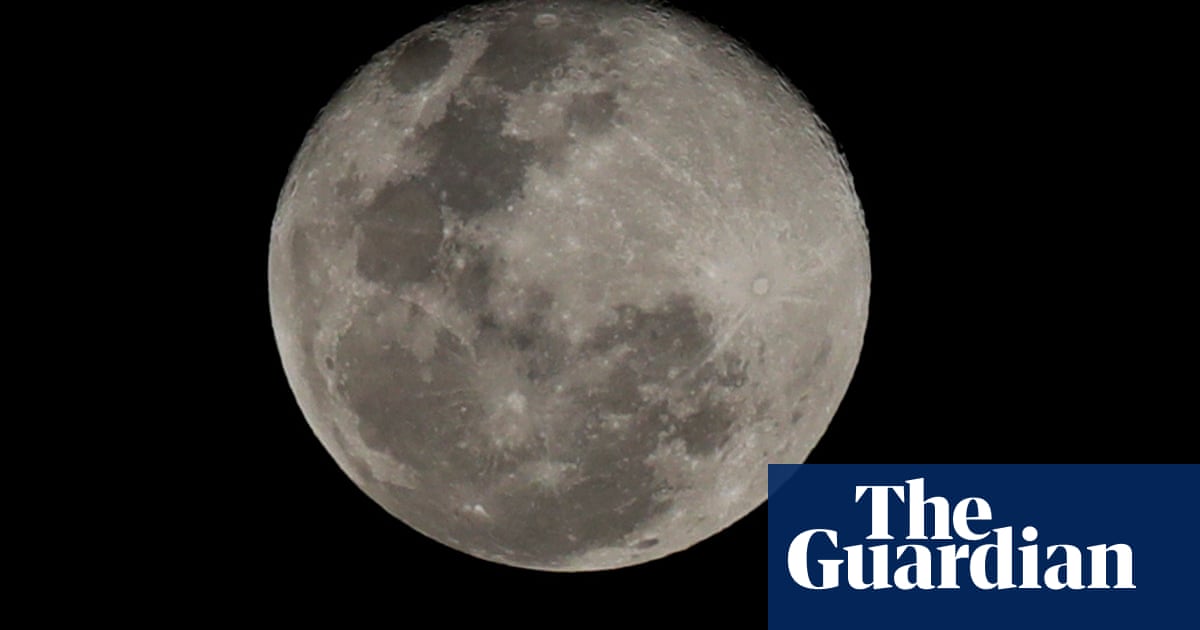
Japan’s Moon lander has resumed operations, the country’s space agency said on Monday, indicating that power had been restored after it was left upside down during a slightly haphazard landing.
The probe, nicknamed the “moon sniper”, had tumbled down a crater slope during its landing on 20 January, leaving its solar batteries facing in the wrong direction and unable to generate electricity.
Jaxa, Japan’s space agency, prioritised transmitting landing data before the battery ran out on the Smart Lander for Investigating Moon (Slim), but said there was a chance the probe would be able to recharge once the west side of the moon starts receiving sunlight in the coming days.
“Last evening we succeeded in establishing communication with Slim, and resumed operations,” Jaxa said on Monday. “We immediately started scientific observations with MBC [multi-band camera], and have successfully obtained first light for 10-band observation,” it said, referring to the lander’s spectroscopic camera.
The agency posted on X an image shot by Slim of “toy poodle”, a rock observed near the lander.
The touchdown made Japan only the fifth nation to achieve a soft lunar landing, after the United States, the Soviet Union, China and India.
The lander achieved its goal of landing within 100 metres of its target, touching down 55 metres away. That is much more precise than the usual landing zone range that experts put at several kilometres.
Slim was aiming for a crater where the moon’s mantle, the usually deep inner layer beneath its crust, is believed to be exposed on the surface.
But around three hours after landing, Jaxa decided to switch Slim off with 12% power remaining to allow for a possible resumption when the sun’s angle changed.
Two probes detached successfully, Jaxa said – one with a transmitter and another designed to trundle around the lunar surface beaming images to Earth. This shape-shifting mini-rover, slightly bigger than a tennis ball, was co-developed by the firm behind the Transformer toys.
Two previous Japanese lunar missions – one public and one private – have failed. In 2022, the country unsuccessfully sent a lunar probe named Omotenashi as part of the United States’ Artemis 1 mission.
In April, Japanese startup ispace tried in vain to become the first private company to land on the moon, losing communication with its craft after what it described as a “hard landing”.
https://news.google.com/rss/articles/CBMieWh0dHBzOi8vd3d3LnRoZWd1YXJkaWFuLmNvbS9zY2llbmNlLzIwMjQvamFuLzI5L2phcGFuLXNsaW0tbW9vbi1zbmlwZXItbGFuZGVyLXBvd2VyLWlzc3Vlcy1sYW5kaW5nLXdvcmtpbmctcGhvdG9zLXN1cmZhY2XSAXlodHRwczovL2FtcC50aGVndWFyZGlhbi5jb20vc2NpZW5jZS8yMDI0L2phbi8yOS9qYXBhbi1zbGltLW1vb24tc25pcGVyLWxhbmRlci1wb3dlci1pc3N1ZXMtbGFuZGluZy13b3JraW5nLXBob3Rvcy1zdXJmYWNl?oc=5
2024-01-29 03:39:48Z
CBMieWh0dHBzOi8vd3d3LnRoZWd1YXJkaWFuLmNvbS9zY2llbmNlLzIwMjQvamFuLzI5L2phcGFuLXNsaW0tbW9vbi1zbmlwZXItbGFuZGVyLXBvd2VyLWlzc3Vlcy1sYW5kaW5nLXdvcmtpbmctcGhvdG9zLXN1cmZhY2XSAXlodHRwczovL2FtcC50aGVndWFyZGlhbi5jb20vc2NpZW5jZS8yMDI0L2phbi8yOS9qYXBhbi1zbGltLW1vb24tc25pcGVyLWxhbmRlci1wb3dlci1pc3N1ZXMtbGFuZGluZy13b3JraW5nLXBob3Rvcy1zdXJmYWNl
Tidak ada komentar:
Posting Komentar